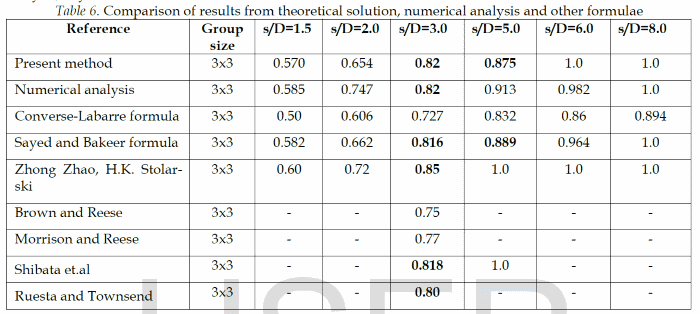EI12345
Geotechnical
- Sep 5, 2018
- 2
Hello,
I am working on a problem for extrapolating a single pile load test to a pile group. I have not had much luck finding methods for determining pile efficiency. Some resources I have found that use Feld's rule indicate a 1/16 reduction in capacity for each neighboring pile. Yet, this method is irrespective of pile spacing.
The pile spacing I am working with is 5' O.C., with approx. 1' diameter piles. If pile spacing is >5*diameter, are group effects negligible? If not, what is an appropriate method to extrapolate a single load test to a pile group.
Thanks,
EL
I am working on a problem for extrapolating a single pile load test to a pile group. I have not had much luck finding methods for determining pile efficiency. Some resources I have found that use Feld's rule indicate a 1/16 reduction in capacity for each neighboring pile. Yet, this method is irrespective of pile spacing.
The pile spacing I am working with is 5' O.C., with approx. 1' diameter piles. If pile spacing is >5*diameter, are group effects negligible? If not, what is an appropriate method to extrapolate a single load test to a pile group.
Thanks,
EL

![[idea] [idea] [idea]](/data/assets/smilies/idea.gif)
![[r2d2] [r2d2] [r2d2]](/data/assets/smilies/r2d2.gif)
